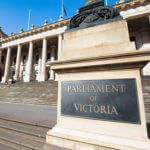The Victorian Charter of Human Rights aims to protect and promote the basic entitlements all humans have. It’s important that those who have public authority understand The Charter and are aware of their obligations when making decisions so human rights are not breached.
What is the Charter of Human Rights?
The Victorian Charter of Human Rights is a piece of Victorian legislation that contains twenty fundamental civil, political, and cultural rights. In essence, these rights reflect four fundamental principles:
- Freedom
- Respect
- Equality
- Dignity
The Charter is infused with the principles that human rights apply to everyone without discrimination, championing the roles that diversity and inclusivity play in strengthening democracy and the rule of law.
The Charter of Human Rights and Responsibilities Act 2006 (Vic) (‘The Charter’) requires public bodies to consider and protect human rights when making decisions. This protection is delivered as an obligation on public bodies and certain private entities to act consistently with the rights enshrined in the Charter.
In doing so, the Charter codifies the Victorian Parliament’s mission to improve transparency and accountability in all interactions between public authorities and Victorian citizens. Accordingly, the Charter has been commended for providing a framework within which the interests of individuals are balanced with the agendas of the public service.
Notably, in some circumstances, the rights encoded in the Charter may be lawfully limited. This limitation is permitted where it is reasonable to do so and where such limits can be justified.
What rights does the Charter protect?
The Charter protects various integral rights ranging from rights in criminal proceedings, such as the right to communicate with a lawyer, to cultural rights like the right to enjoy one’s culture, religion, and language. Other rights include the right to participate in public affairs, the right to be free from servitude, the right to freedom of expression, and rights relating to privacy and reputation.
Significantly, the Victorian Charter is strengthened by its particular focus on protecting children’s rights. This is exemplified by the Charter’s recognition that every child has the right to protection in their best interest.
Moreover, underpinning the Charter is the principle that human rights have unique importance for Victoria’s Aboriginal and Torres Strait Islander Peoples. Through this acknowledgment, the Charter addresses the centrality of human rights to Indigenous empowerment.

How does the Charter protect these rights?
The Charter protects human rights in a few key ways. These include:
- Ensuring future Victorian laws are interpreted in a way that is compatible with human rights; and
- Introducing a requirement that all future Victorian laws contain a ‘statement of compatibility’ when they are introduced in Parliament so they can be scrutinised about human rights; and
- Giving the Victorian Equal Opportunity and Human Rights Commission (the main overseeing body) more power to enforce the Charter.
Who does the Charter apply to?
The Charter places obligations on public authorities such as the Victorian Government, local governments within Victoria, and the Victorian police. The obligations under the Charter may also apply to private-sector entities when they are exercising a ‘public function’. This could include a company bound by a government contract, such as a private company providing correctional services like prison management.

What are the changes, and when will they be in place?
The introduction of the Charter, which came into full effect in early 2008, impacts the processes by which public authorities and some private make decisions. Therefore, alongside granting rights, the Charter implements a set of accompanying responsibilities.
One notable change engendered by the Charter is the introduction of the substantive obligation requiring those bound by the Charter to act compatibly with human rights. Supplementing this substantive obligation is the procedural obligation that such bodies must give proper consideration to human rights in making decisions and exercising their powers.
What does this mean for companies?
As a result of the Charter, those bound by it must remain aware of their obligations when making decisions and exercising their functions. Consequently, Ministers, local councils, police, and other public bodies must:
- Not act in a way that is inconsistent with the human rights encoded in the Charter; and
- Given proper consideration to these human rights before and during decision-making processes; and
- Weigh up competing individual and community rights with public interests.
A breach of human rights is a serious matter that can attract severe consequences. Therefore, any entity or authority bound by the Charter must ensure that employees receive adequate training to meet their legislative obligations.
What your company can do
Safetrac’s Victorian Charter of Human Rights and Responsibilities training course is designed to give learners a general understanding of the Charter of Human Rights and Responsibilities Act 2006 (the Charter).
This course has been developed to provide an overview of the Charter, how it affects people living in Victoria, and the obligations it places on public authorities.
Safetrac’s intuitive online Compliance Platform allows you to create and perform safety audit questions and attestations.
Contact us today to request a free demonstration on any of our courses or our platform, and discover how we can assist your compliance goals and activities.
Victorian Charter of Human Rights Training Course
This course is designed to give learners a general understanding of the Charter of Human Rights and Responsibilities Act 2006 (the Charter).
Safetrac Compliance Platform
Using our online Compliance Platform, your organisation will be able to schedule, deliver, manage and report on compliance training and surveys. Safetrac’s cloud-based portal is supported by an Australian team of experts, providing you with a compliance platform that is intuitive, works seamlessly across multiple devices, is easy to implement, and provides your business with a comprehensive compliance reporting system.











